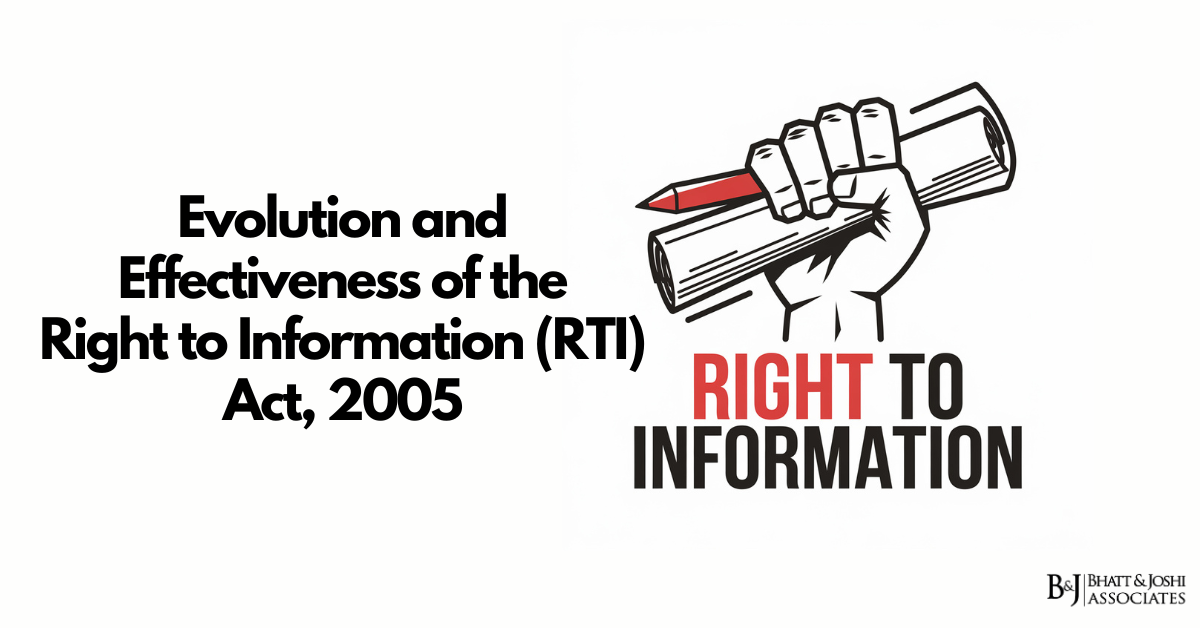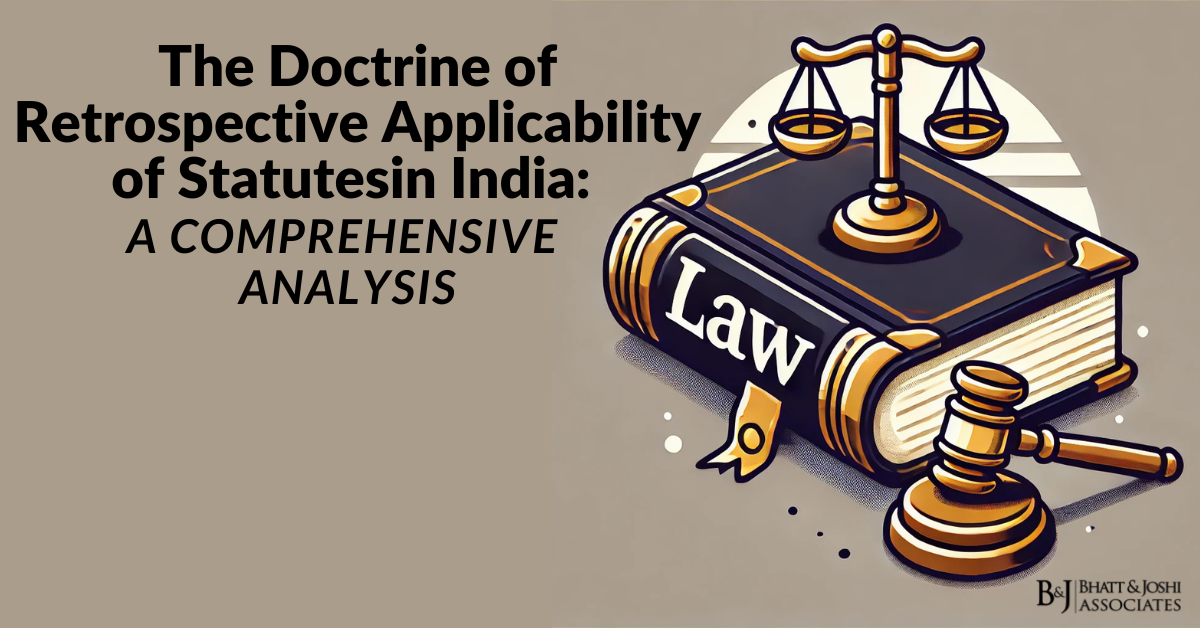Introduction
The Right to Information Act 2005 represents a major turning point in India’s move towards transparency and accountability in governance. Enacted on 15 June 2005 and operationalised from 12 October 2005 the RTI Act provides citizens with a statutory right to access information held by public authorities. Its primary objective is to empower citizens by ensuring transparency in governmental affairs promoting accountability in government institutions and combating political corruption. This piece of legislation provides a significant move towards a shift in the relationship of government with its citizens, enabling citizens to actively participate in the democratic governance framework by demanding information which was previously inaccessible in a closed state.
Historical Context and Evolution of Right to Information Act 2005
The development of the RTI Act in India is associated very closely with the global transparency movement and the advocacy work of civil society organizations. Before the RTI Act, the idea of the public being able to access information was unknown, particularly because of the Official Secrets Act of 1923 which had established a culture of secrecy. This began to change with the understanding that every democracy requires some form of transparency.
India’s work for the RTI Act started with the Freedom of Information Act in 2002 which sought to enable citizens to access government documents and information. As with much legislation from the UPA government, this Act was poorly enforced and had so many loopholes that it became worthless. The demand for an effective and easily enforceable law was pushed forward by grassroots movements like Mazdoor Kisan Shakti Sangathan (MKSS) in Rajasthan. Led by Aruna Roy, MKSS engaged in campaigns to make government documents available to the public to curb corruption and promote accountability in public works systems. Such campaigns were replicated all over the country, leading to a national discourse on the need for a proper law regarding citizens’ right to information.
The Civil Society pressure and Political Will combined to facilitate the passage of the RTI Act in 2005. The RTI Act of 2005 was, unlike its predecessor, focused on the citizen with specific steps laid out for information requests, appeal on denial, and punishment on refusal to respond. With the introduction of the Act, there was greater transparency than previously experienced, as it incorporated provisions to enhance citizen participation in governance activities.
Key Provisions of the Right to Information Act 2005
With a few exceptions, the RTI Act allows any citizen of India to apply for and receive information from public authorities. This is detailed in section 3 of the Act, while sections 6 and 7 establish the application process and response timeframes. Citizens may submit their requests, either verbally or electronically, and the public authority is supposed to reply within 30 days. If the matter involves an individual’s life or liberty, the timeframe is shortened to 48 hours.
As section 8 outlines, some information may be withheld because revealing it would be harmful to national security, international relations, public safety, or an individual’s privacy. However, the Act does include a public interest override that permits the release of protected information if it serves a more significant public interest. This provision emphasizes the aim of the Act to maintain a delicate balance between confidentiality and transparency.
The PIO System as prescribed in the Act is another noteworthy aspect. Within every public authority, Public Information Officers (PIOs) have been designated to manage information queries. Respondents who are not happy with the reply or with the refusal can escalate the matter to First Appellate Authorities in the Section. Further appeals can be submitted to the independent statutory body responsible for supervising and ensuring compliance with the RTI Act which is the Central Information Commission (CIC) or State Information Commissions (SICs).
Judicial Interpretation and Landmark Judgments
The judiciary has interpreted the law and its provisions in a manner that strengthens the RTI Act while also ensuring its implementation. Numerous landmark decisions have been made that have provided further clarity concerning the ambiguities in the Act as well as its limitations.
Transparent governance was discussed in detail during the Raj Narain case of 1975. Even though this case happened before the RTI Act, the ruling given by the Supreme Court led to the further development and recognition of the right to information as one of the fundamental rights. The ruling further stated that it is the prerogative of every citizen to know the prerequisites of government actions, avowing that transparency is crucial for democracy to exist and function credibly.
In CBSE v. Aditya Bandopadhyay (2011), the Supreme Court stated the limitations on the RTI Act and criticized its overarching influence stating that withholding information is permitted if it is within the public interest and the disclosure of it would waste public funding. This ruling provides a nuanced understanding of the balance that must be found between transparency and constructing an effective administrative system.
RBI v. Jayantilal Mistry (2015) focused on the overriding nature of the RTI Act on other confidentiality statutes. It emphasized the need for public accountability in financial governance. With regards to regulatory actions on banks, the Supreme Court instructed the Reserve Bank of India to release the information making it clear that there needs to be transparency in the regulation of finance.
Khanapuram Gandiah v. Administrative Officer (2010) is yet another important case that dealt with the query scope under the Act. The Court stated that the authorities are not obliged under the RTI Act to give justifications or reasons for their administrative decisions; they are only required to provide basic information. That, in essence, further defined the boundaries of citizens’ rights under the Act.
The Activist Subhash Chandra Agrawal has had several prominent legal decisions because of his use of RTI. His applications have resulted in increased accountability in the judicial and constitutional authorities, which proves the ability of the RTI Act to ensure governance accountability.
Impact on Governance and Society
The RTI Act has a significant effect on India’s governance landscape. By enabling citizens to access information the Act has exposed a vast amount of cases of corruption, inefficiency and maladministration. For example, RTI applications have revealed irregularities in some of the major government schemes such as the Mahatma Gandhi National Rural Employment Guarantee Scheme (MGNREGS) and the Public Distribution Scheme (PDS). In addition to preventing corruption, the RTI Act has also enhanced participatory democracy by allowing citizens to have checks and balances on the actions of public officials. Ensuring transparency in how public funding is distributed to the rural and disadvantaged communities has led to greater accountability and hence the public expenditure is spent more effectively on aid to the disadvantaged groups. In particular, for instances where tribal groups feel that funds allocated by public authority for welfare purposes are not being used as intended, they have used RTI to find discrepancies in how the funds have been disbursed and this has increased accountability of public spending.
Challenges in Implementation Right to Information Act
Despite the accomplishments of the RTI Act, there are several challenges that the Act is facing. One key issue is the lack of awareness amongst citizens of their rights under the RTI Act. Many people in rural areas in particular remain unaware of the procedures by which applications can be made, for RTI applications to be filed and the appeal process which needs to be carried out. Bureaucratic resistance is another significant challenge that affects the regularity of implementation of the rules. Public officials often cite exemptions under Section 8 therefore denial of information occurs at times even after archaic applications have been submitted; this has resulted in unnecessary delay in disclosure of information and also fails to enable the requirements of the Act to be fully effective. State Information Commissions and the CIC regularly engage in operational inefficiencies, these inefficiencies are often highlighted by such institutions as an example of understaffing, inadequate levels of financial support and innumerable reports that have piled up and make movement of cases at unmanageable levels. The safety of RTI activists is of utmost concern. Several whistleblowers who are actively trying to bring to light corruption procured through RTI have faced a combination of threats, harassment and physical violence. Corruption can usually only be exposed by whistleblowers and these individuals often get sent letters, intimidated, thrown into prison and also face death threats from those who will do anything to prevent the exposure of corruption under the RTI Act. Due to this the lack of a comprehensive law for protecting whistleblowers ensures that the risk posed to these individuals increases and raises doubt over whether the RTI Act is actually effective in promoting accountability.
Legislative Amendments and Controversies
The RTI Act has undergone amendments, some of which have sparked widespread criticism. The RTI (Amendment) Act, 2019, altered the tenure and service conditions of Information Commissioners, leading to concerns about their independence. Critics argue that these changes dilute the authority of the CIC and SICs, potentially compromising their ability to act impartially.
Comparative Analysis with Global Transparency Laws
The RTI Act is often lauded as one of the most progressive transparency laws in the world. Its emphasis on timely responses and minimal procedural requirements sets it apart. However, when compared to global counterparts like the Freedom of Information Act in the United States or the Access to Information Act in Canada, India’s RTI Act faces unique challenges. Many advanced transparency frameworks are complemented by robust whistleblower protection laws and proactive disclosure mechanisms, areas where India still lags.
The Way Forward for Strengthening the Right to Information Act Framework
To effectively implement the RTI Act, several actions need to be taken. Citizens need to be informed about campaigns that teach them how to utilize information as well as their rights. Bureaucratic compliance of the Act can be improved with Capacity-building activities for government officials.
It is of utmost importance to improve the independence of Information Commissions. This requires a revisitation of the resource and independence-restricting amendments along with sufficient funding and staffing. Moreover, the enactment of a whistleblower protection statute is also essential to protect those who employ the RTI tool to report corrupt practices.
Technological interventions can also significantly contribute. The creation of digital RTI and response tracking systems would greatly reduce delays. Public authorities must be compelled more vigorously to disclose information proactively to fulfil the Act’s Section 4 requirements to reduce the number of individual applications to the barest minimum.
Conclusion
The Right to Information Act 2005 has had a transformative effect on governance in India by empowering the citizens and promoting transparency. The act has been very successful in promoting accountability and exposing corruption and whilst taking steps in this direction systemic challenges and persistent legislative frameworks are preventing further progress. As India continues to progress a renewed commitment to improving transparency coupled with institutional and procedural reforms is required to ensure that the RTI Act remains central to participatory democracy. Ensuring the flaws within the act are rectified and reforms within its implementation act as well can ensure the RTI Act continues to be a prestige tool to ensure good governance while upholding the democratic ideals of accountability and transparency.














